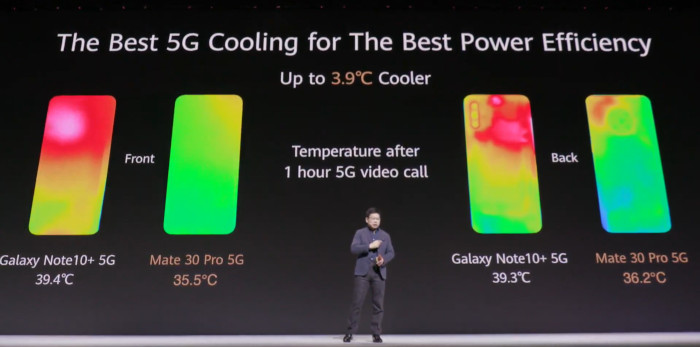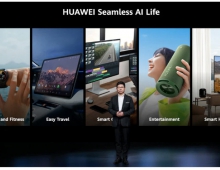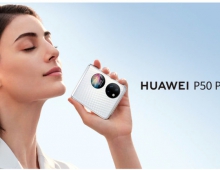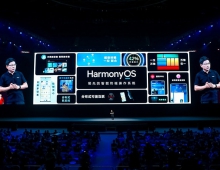
Huawei's New Mate 30 Series is Great But Has no Google Access
Huawei on Thursday announced the Mate 30 smartphone range at the Convention Center in Munich, but the high-end 5G phone hs no access to software and apps supported by Google.
Huawei announced the Mate 30 Pro, the Mate 30 and Mate 30 Lite. The phones come in both 5G and 4G versions. With the new series, Huwaei is trying to challenge to Apple’s new iPhone 11, saying the Chinese firm’s new devices were more compact, their cameras superior and wraparound screens brighter.
The Mate 30 range was Huawei's first phone unveiling since President Donald Trump hit the Shenzhen-based company with an export ban in May. Washington effectively banned U.S. firms from supplying Huawei, alleging the Chinese firm is a national security risk as its equipment could be used by Beijing to spy, which Huawei has repeatedly denied.
Huawei’s new phone launch has been marked by uncertainty over whether buyers of the flagship Android device will be able to use apps supported by Google. The truth is that the Mate 30 range will run on an open-source version of Android - and not on the current version licensed from Google.
The US ban issue was not addressed until about 90 minutes into the company's launch event, and then only briefly.
"Today you know because of the US ban... this phone cannot pre-install the GMS [Google Mobile Services] core," explained the firm's consumer devices chief Richard Yu. "It forced us to use the HMS [Huawei Mobile Services] core."
The smartphones are not be able to use Google Mobile Servicesfrom the Play Store and download apps like Gmail, Youtube or Maps. Instead, Huawei will offer its own interface that will allow users to access some Google apps. Yu said that the firm had set aside $1bn (£801m) to encourage developers to make their apps compatible, and said more than 45,000 apps had already integrated the firm's technology. But he did not name any of them. The HUAWEI Mobile Services (HMS) is a fully open HUAWEI Mobile ecosystem and toolkit that the company hopes will bring better app experience to users and app growth to app developers.

On the new Mate 30 series, EMUI 10 added smart gesture control, smart AI rotate, and seamless multi-screen collabration between HUAWEI devices. One software feature of the Mate 30 Pro is both the ability to use Air Gestures, but also something called "AI Rotate." The company says that the phone will look at the position of your eyes and orient the phone's display to meet that position, no matter what the angle. If you receive a message, the system will roll out the preview if it senses you are alone, but just give you only a message notification if you're in company.
The front camera, 3D Depth Sensing Camera (Pro model) and Gesture Sensor are inducted together to identify your facial features and detect the movement of your hands. With this real-time information received in the Tiny-Core NPU, many commands such as unlocking, slide-changing, and screenshots can be executed swiftly when you look at the screen or simply swipe your hand.



The smartphones are powered by Kirin 990 chipset , which Huaei claims it outperforms the Qualcomm-powered 5G phones already on the market from market leader Samsung.
The Huawei Mate 30 and Mate 30 Pro sport 6.62in Rigid OLED and 6.53in Flex OLED screens, respectively; the latter makes for a 'waterfall'-style display that curves around the edges of the devices.
These screens, which Huawei boasts are "true edge-to-edge", sport a smaller notch than the Mate 20 series, and the company claims the cutout is the "most advanced" on the market, with the visually-offensive cutout housing a gesture sensor and 3D depth camera alongside its selfie camera.
The smartphones feature no physical keys, boasting a new side-touch design comprising of Invisible Virtual Keys for dual side control.
Both phones have a Leica-branded rear camera array contained within a circular camera cutout that Huawei is calling a “Halo ring design.”


On the back of the Mate 30 Pro model you'll find a camera setup comprising 40MP SuperSensing Wide (27mm,f/1.6, OIS) , 40MP ultra-wide Cine (18mm, f/1.8) and 8MP telephoto lenses (80mm, f/2.4, OIS). The camera supports an incredible ISO 409600 senstivity for night shots, a 45x zooming range (Ultra Wide - 3x Optical - 30x digital), real-time Bokeh effects, 4K HDR+ time laspe and dual OIS and AIS for stable shootings. It can shoot 4K 60 fps video and its maximum sensitivity during video shooting is ISO 51200. The camera also supports the world's highest frame rate on a smartphone, being capable of going as slow as to 7680 frames per second when filming in 720p. The Mate 30 Pro also comes with a 3D depth senor.

The Mate 30 version has a smaller 16MP ultra-wide Cine (17mm, f/2.2) camera, its 40MP SuperSensing Wide lacks OIS (27mm,f/1.8), has the same 8MP Telephoto camera and a Laser Focus element incstead of the 3D depth senor. In addition, the ISO for still images is lower at 204800.
Battery sizes also differ between the two phones; the Mate 30 Pro has a larger 4,500mAh battery, compared to 4,200mAh in the Mate 30. Both phones support 40W wired charging as well as 27W fast wireless charging.

At launch, the handsets will be available in Space Silver, Cosmic Purple, Emerald Green, Black, along with a vegan leather finish in Orange or Forest Green. All of these have a matte metal gradient finish that is designed to avoid catching fingerprints. Both models also have the same ingress protection as the metal editions. In terms of sturdiness, the Mate 30 Pro is rated for IP68 for water and dust, while the Mate 30 is IP53.
During the launch event, Huawei's Richard Yu also said the much anticipated Mate X foldable phone will be launched next month.
On stage Jan Becker, CEO of Porsche Design, announced the Mate30RS. The Mate series has been working with Porsche design for several consecutive years to deliver a high-end and luxurious experience. The Mate 30 RS comes with a leather backing and a strip running down the middle that eliminates the halo ring around the cameras. This edition comes in red or black, with an additional case that has a finger strap that doubles as a kickstand.

Samsung’s Galaxy S10 5G, which retails at $1,299, and the iPhone 11 Pro that starts at $999 but lacks 5G connectivity.
| HUAWEI Mate 30 Pro | HUAWEI Mate 30 | |
| Size |
|
|
| Colour |
|
|
| Display |
|
|
| Splash, Water, and Dust Resistant |
|
|
| Processor |
|
|
| Operating System |
|
|
| Memory |
|
|
| Camera |
|
|
| Battery |
|
|
| Charging |
|
|
| Connectivity |
|
|
| Location |
|
|
| NFC |
|
|
| SENSORS |
|
|
| Network |
|
|





















